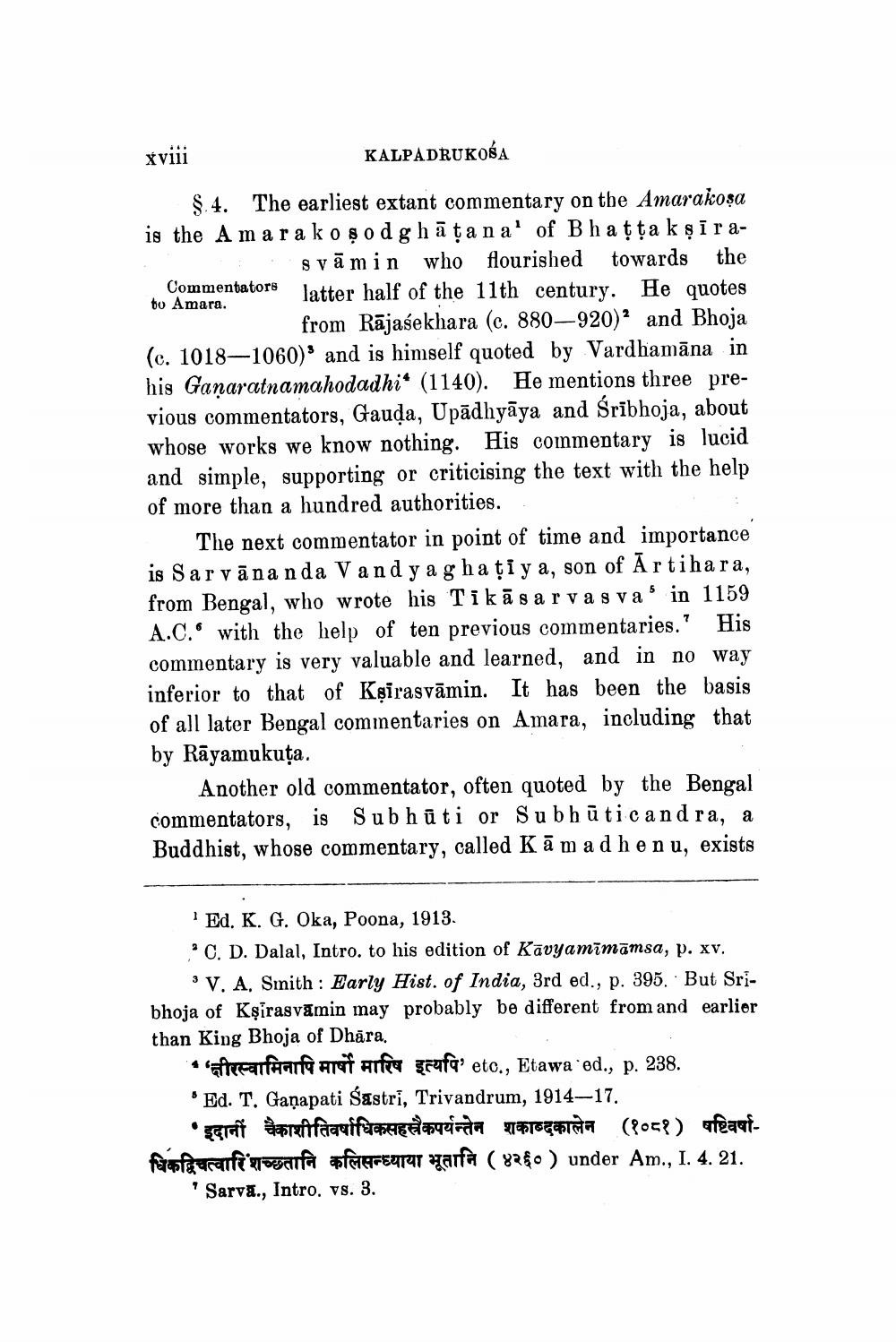________________
xviii
KALPADRUKOBA
$.4. The earliest extant commentary on the Amarakosa is the A ma r ak o şod ghā ța na' of Bh a ț ța k şīra
svāmin who flourished towards the Commentators latter half of the 11th century. He quotes to Amara.
from Rājasekhara (c. 880—920) and Bhoja (c. 1018–1060) and is himself quoted by Vardhamāna in his Ganaratnamahodadhi* (1140). He mentions three previous commentators, Gauda, Upādhyāya and Śrībhoja, about whose works we know nothing. His commentary is lucid and simple, supporting or criticising the text with the help of more than a hundred authorities.
The next commentator in point of time and importance is Sar vāna nda Vand y a g h a ţiy a, son of Artihara, from Bengal, who wrote his Tikās ar va s va in 1159 A.C. with the help of ten previous commentaries.' His commentary is very valuable and learned, and in no way inferior to that of Kșirasvāmin. It has been the basis of all later Bengal commentaries on Amara, including that by Rāyamukuţa.
Another old commentator, often quoted by the Bengal commentators, is Subhūti or Subhūtic and ra, a Buddhist, whose commentary, called Kā madhe nu, exists
Ed. K. G. Oka, Poona, 1913. 'C. D. Dalal, Intro. to his edition of Kāvyamīmāmsa, p. xv.
*V. A. Smith: Early Hist. of India, 3rd ed., p. 395. But Sribhoja of Kşirasvāmin may probably be different from and earlier than King Bhoja of Dhāra.
* carreanfaara Art Anfra szafa' etc., Etawa ‘ed., p. 238.
Ed. T. Gaņapati Gastri, Trivandrum, 1914-17.
• इदानी कैकाशीतिवर्षाधिकसहस्रकपर्यन्तेन शकाब्दकालेन (१०८१) षष्टिवर्षाfara peranti rosafat afetreyrar yarfa ( 82&o ) under Am., I. 4. 21.
'Sarva., Intro. vs. 3.




